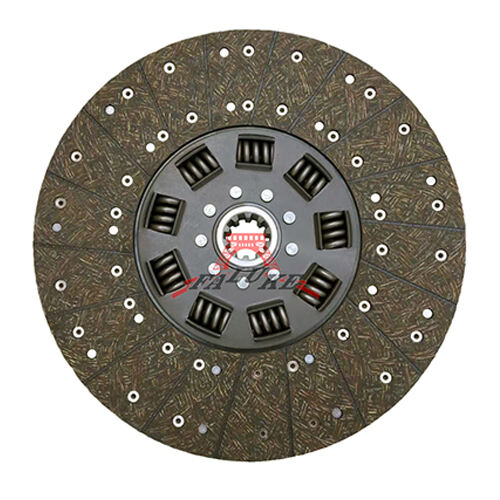Understanding the Clutch System
In any vehicle using manual transmission the clutch system serves as a fundamental element for enabling drivers to connect and disconnect the engine power from the transmission gears. A clutch system exists for two essential purposes: it enables gear transitions under controlled conditions and controls power delivery between the motor and vehicle transmission. Among all clutch system elements the pressure plate serves as a key component which strongly affects the performance characteristics of automobiles.
The Role of the Clutch Pressure Plate
A clutch pressure plate by Yichun Marke functions as a substantial heavy metal disc created from cast iron or steel to push on the clutch disc toward the flywheel. The transmitting force maintains continuous smooth flow of engine power to transmission and wheels. The driver can disengage the clutch disc from the engine when they push the clutch pedal because the pressure plate automatically releases. When the driver engages the disengagement the transmission remains uninjured.
Enhancing Vehicle Longevity and Performance
The design elements of a pressure plate together with its quality level extensively influence both vehicle operational excellence and product lifespan. Engineers design high-performance pressure plates with exact pressure distribution which protects clutch disc and flywheel from premature failure and damage. The precise nature of this mechanism helps decrease both clutch component overheating along with slippage as it minimizes early failures. When power transfer from engine to wheels operates efficiently through a well-functioning pressure plate in the transmission the vehicle achieves improved acceleration and faster response.
The Impact on Driving Experience
All drivers base their love for manual shifting on how well their clutch feels when they use it and how responsive it is while operating the gear shift. A properly designed clutch pressure plate enables drivers to experience smooth predictable engagements that create pleasurable manual transmission driving experiences. A damaged or worn-out pressure plate will produce problems such as clutch chatter combined with shifting gear difficulties and a soft clutch pedal feel. When issues with the clutch pressure plate remain untreated they create safety hazards during operation alongside reducing the driving quality.
Pressures within pressure plates must be properly selected based on the performance requirements.
Multiple factors determine the correct clutch pressure plate selection process for a vehicle which combines vehicle type together with performance needs and driving conditions. Cars used for daily commute functions work optimally in standard OEM pressure plates from the manufacturer. High-performance vehicles together with vehicles operating under harsh driving situations may need to use an upgraded heavy-duty pressure plate to maintain performance standards. Performance pressure plates include advanced components with specialized engineering that makes them endure intense torque and heat loads giving them better performance than regular pressure plates.
Maintenance and Replacement
All automotive components including the clutch pressure plate need routine checks and maintenance work for proper functionality. The pressure plate deteriorates from both heat conditions and friction that builds up which leads to necessary replacement. If a pressure plate fails the main indications will be clutch slippage accompanied by a burning odor and problems shifting gears smoothly. Timely pressure plate replacements combined with maintenance duties yield enhanced vehicle performance and protect the transmission system from additional harm so that owners avoid spending money on extensive future repairs.
Conclusion
Manual transmission vehicles operate efficiently under manual gears because of the essential clutch pressure plate component. The process of gearbox changeovers alongside effective power transmission depends crucially on the pressure plate to maintain vehicle longevity and improve driving performance. Vehicle performance and driving satisfaction depend on the knowledge of pressure plate value and appropriate maintenance with scheduled replacements. The correct clutch pressure plate determines absolute automotive performance during ordinary commuting and high-performance activities.

 EN
EN AR
AR
 BG
BG
 HR
HR
 CS
CS
 DA
DA
 NL
NL
 FI
FI
 FR
FR
 DE
DE
 EL
EL
 HI
HI
 IT
IT
 JA
JA
 KO
KO
 NO
NO
 PL
PL
 PT
PT
 RO
RO
 RU
RU
 ES
ES
 SV
SV
 CA
CA
 TL
TL
 ID
ID
 LV
LV
 LT
LT
 SR
SR
 UK
UK
 VI
VI
 HU
HU
 TH
TH
 TR
TR
 FA
FA
 AF
AF
 MS
MS
 SW
SW
 GA
GA
 HY
HY
 KK
KK
